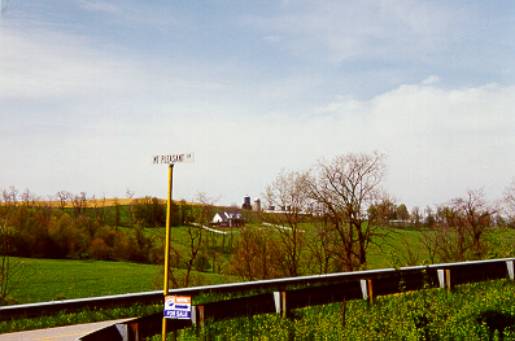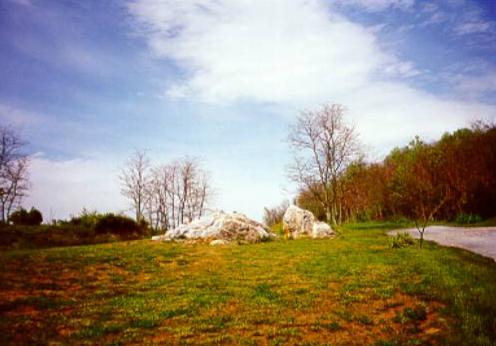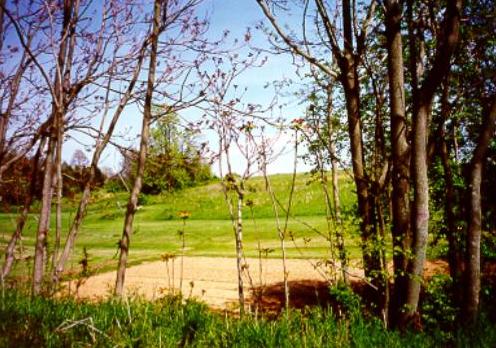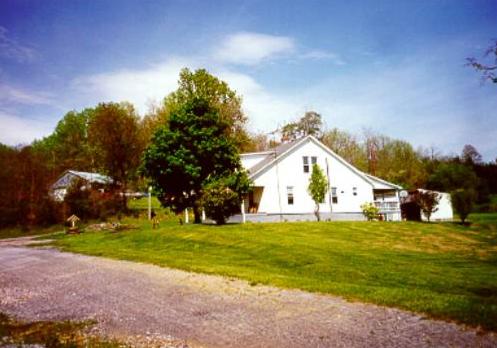
Mount Pleasant
The Scott Plantation In Rockbridge County, Virginia
Anna V. Scott Jackson
The house was a long, low structure with a gambrel roof, in which were set dormer windows. Across the front ran the usual veranda, whose columns supported the projecting roof of the house, and which was reached by a rather high flight of steps. This house stood on a natural slope or terrace, shored up by a brick wall, from which a double flight of steps, with iron railings descended in a spreading semi-circle, to the driveway below. Four huge locust trees stood sentinel-wise on this terrace. At one end of the old house, a two story brick wing had been added towards the middle of the last century. Grouped at the back were the cabin-like outhouses, dairy, smoke-house and darkies quarters, common to Virginia dwellings of that class.
The interior of the house was even more attractive than the exterior. Those who selected and placed the furniture of the home, had at that early date, learned that it was not what they did not have, but what they had, that made a room attractive. The arrangement of the home was unusual to those of a later generation. On the first floor was a large room called, as in the old country The Hall. Here the family sat in the evening before a large fireplace. Large, old fashioned chairs were disposed about the room. In the center of the room was a large table with lamps, which were lighted at night. On this table was a large family Bible, Pilgrims Progress published 1660, Robinson Crusoe by Defoe, published 1719 and some books of poetry. No papers or magazines. Baskets of knitting and mending were on the table also. Leading from this room was the dining hall as it was called, where the family met three times a day and after standing for Grace, sat down to a table laden, not only with two or three kinds of meat, vegetables, pies and pudding, but all sorts of pickles, jellies and preserves. Brandied peaches, watermelon pickles in queer shaped dishes were placed on the table and each one helped himself. Often no one touched these various side dishes, but they were always there. On the first floor also were several master bedrooms, which were comfortably, but sparingly furnished - four posters, chests of drawers and beautiful mirrors. On the two floors above were numberless bedrooms, many to accommodate the large family of children and others for guests, who were always welcome. All of the furniture was of fine mahogany, much in the Chippendale style as much, if not all of the furniture in those days was brought over from England or Ireland to Richmond, Va.
The kitchen was approached by a latticed porch from the dining room. In the South no cooking was done in the main house. In the kitchen was an immense fireplace, which took the place of electric stoves or hooded ranges of today. The fire here never went out. It was equipped with cranes or sways, copper kettles, iron pots and heavy boards on which the corndodgers, filled with crisp cracklings, were cooked. Spits took care of the meats and vegetables were boiled in pots and pans. Colorful peppers decorated the mantle piece and ceilings. There were splint bottomed chairs on either side of the fireplace, where the old colored cooks sat smoking their pipes, while they watched the food cooking. From the kitchen a flight of steps led to the dairy, where spring water in troughs cooled the milk, cream and butter. Then on to the smoke house, the gardens and stables.
The Scotts were strict Presbyterians and did not approve of dancing or cards. They stood before each meal for grace, went regularly to church, the women on horseback, the men and boys walking. They carried their dinner and remained all day for the different services. The isles of "Old Timber Ridge Church" were sunken and one could only see the heads of the people as they sat in their enclosed pews. During the services the very young children would play on the floor of these pews.
All provisions were brought by wagon from Richmond, a distance of about one hundred miles. At certain times during the year a Tailor would come with his workmen, bringing with him materials, some fine, for those in what was called "The Big House" and coarser materials for the servants and slaves. The Tailor and his men would remain a month.
The Scotts were very kind to their slaves and there was great sorrow and regret among them when Jesse Scott freed them and went to Indiana. Old Aunt Sucky, William Clement Scott's mammy, was so unhappy she hanged herself after they left.
Jesse Scott B-1783, D-1849 was tall and thin with well shaped hands and feet. He had black eyes and hair and a swarthy complexion. He was very quiet and reserved. His wife was blond, blue eyes, fair complexions. In her youth she was tall and slender but when she died, she was quite large. She had remarkable executive ability and it was said that she could keep more people busy than any one in Virginia. She would go to the darky cabins and show the women how to make their children's clothes. There was always a close friendship between her and the slaves but never familiarity.
Judging from contents of old trunks, in the attic of William Clement's home in Richmond, Ind., the family had some expensive fine clothes, because in these old seal trunks the children in the year 1864 found beautiful velvet waistcoats, silk hats, satin dresses. Also Mrs. Jesse Scott, 63 when she died, always wore a black silk dress with cape trimmed with black velvet ribbon and a handsome lace cap over her gray hair. She, Anna Irvine Scott and her husband, Jesse Scott are buried in Earlham Cemetery, Richmond, Indiana.
Mount Pleasant passed into the hands of The Houstons, who were cousins of the Scotts, after the Scotts left Virginia.
A Houston now lives there - 1945.


These pictures were taken in May, 2000.

|
Mt. Pleasant Lane is located off Rt. 613 at Exit 200 from Rt. 11 (Lee Highway). I haven't been able to locate a map showing this as being the Scott property. However a book on country lanes by the Rockbridge Historical Society states that Mt. Pleasant Lane was named for the Houston property. According to Anna Scott Jackson's notes, the Scott Plantation was sold to the Houston's when the Scotts went to Indiana. Mt. Pleasant Lane is a short road which curves off to the left towards the house shown below. | |

|
The end of Mt. Pleasant Lane, looking back toward the road. | |

|
The view from Mt. Pleasant Lane. | |

|
The current house on Mt. Pleasant Lane. | |




